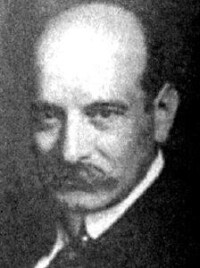保羅·沃伯格
保羅·沃伯格
20世紀初的美國,尚沒有類似中央銀行的機構,羅斯柴爾德等金融家族已經為建立這樣一個由私人控制的機構呼籲多年,卻一直少有進展。這時,與羅斯柴爾德家族熟識的保羅·沃伯格與菲利克斯·沃伯格兩兄弟成為主攻手,尤其是保羅·沃伯格,憑藉出眾的金融知識,極力進行鼓吹,最終促成相關議案獲得通過。1913年美聯儲正式建立,其後保羅·沃伯格成為第二任副主席,他被認為是美聯儲得以建立的關鍵推手,是“美聯儲的總設計師”。

保羅·沃伯格
此時,羅斯柴爾德家族在美國推行私有中央銀行的計劃已近百年,始終起起伏伏沒有最終得手。這一次,保羅將承擔主攻任務。
在抵達美國不久,保羅加盟先頭部隊雅各布·希夫的庫恩雷波公司,並娶了希夫妻妹的女兒,費里克斯則娶了希夫的女兒。
西奧多·羅斯福和威爾遜總統兩朝的金融顧問加里森(Colonel Ely Garrison)指出:“在奧爾德里奇計劃在全國招致憤恨和反對的情況下,是保羅·沃伯格先生把《美聯儲法案》重新組合起來的。這兩份計劃背後的天才智慧都來源於倫敦的阿爾弗雷德·羅斯柴爾德。”

“美聯儲的總設計師”保羅·沃伯格
另一個保羅要應付的難題是,如何隱藏紐約的銀行家將主導美聯儲這個事實。19世紀以來,美國中西部廣大中小商人、農場主飽受銀行危機的浩劫,對東部銀行家深惡痛絕,這些地區的議員不可能支持紐約銀行家佔主導的中央銀行。保羅為此設計了一套由12家美聯儲地區銀行構成整個系統的天才解決方案。在銀行圈子之外,很少有人明白,在美國貨幣和信貸發放高度集中於紐約地區這一基本前提下,提議建立各地區聯儲銀行,只不過是給人造成中央銀行的業務並沒有集中在紐約的假象罷了。
還有一個體現保羅深謀遠慮之處的就是將美聯儲總部設在政治首都華盛頓,而有意遠離它真正接受指令的金融之都紐約,以進一步分散公眾對紐約銀行家的顧慮。
保羅的第四個困擾是如何產生12家美聯儲地區銀行的管理人員,奧爾德里奇的國會經驗終於派上了用場。他指出中西部的議員普遍對紐約銀行家有敵意,為了避免失控現象,所有地區銀行的董事應該由總統任命,而不要由國會插手。但是這造成了一個法律漏洞,《憲法》第一章第八節明確規定由國會負責發行管理貨幣,將國會排除在外,意味著美聯儲從一開始就違背了《憲法》。後來這一點果然成了很多議員攻擊美聯儲的靶子。
在經過這一番頗具匠心的安排以後,該法案儼然以模擬美國憲法分權與制衡的面目出現。總統任命,國會審核,獨立人士任董事,銀行家做顧問,真是滴水不漏的設計!
Paul Moritz Warburg (August 10, 1868 — January 24, 1932) was a German-American banker and early advocate of the U.S Federal Reserve system.
Warburg was born in Hamburg, Germany, to a successful Jewish banking family. His parents were Moritz and Charlotte (Esther) Warburg. After graduating from the Realgymnasium in Hamburg in 1886 he entered the employ of Simon Hauer, a Hamburg importer and exporter, to learn the fundamentals of business practice. He similarly worked for Samuel Montague & Company, bankers, in London in 1889-90, the the Banque Russe pour le Commerce Etranger in Paris in 1890-91.
In 1891 Warburg entered the office of the family banking firm of M.M. Warburg & Company, which had been founded in 1798 by his great-grandfather. He interrupted work there to undertake a world tour during the winter of 1891-92. Warburg was admitted to a partnership in the family firm in 1895.
On October 1, 1895, Warburg was married in New York City to Nina J. Loeb, daughter of Solomon Loeb, founder of the New York investment firm of Kuhn, Loeb & Company. The Warbugs were the parents of a son, James Paul Warburg, and a daughter, Dr. Bettina Warburg.
Although a major factor in German finance, after frequent business trips to New York Warburg settled there in 1902 as a partner in Kuhn, Loeb & Company where the influential Jacob Schiff, his wife's brother-in-law, was senior partner. Warburg remained a partner in the family firm in Hamburg, but he became a naturalized American citizen in 1911. He was a member of Temple Emanu-El in New York City.
Warburg was elected a director of Wells Fargo & Company in February 1910. He resigned in September 1914 following his appointment to the Federal Reserve Board, and Jacob Schiff was elected to his seat on the Wells Fargo board.
Paul Warburg became known as a persuasive advocate of central banking in America, in 1907 publishing the pamphlets "Defects and Needs of Our Banking System" and "A Plan for A Modified Central Bank". His efforts were successful in 1913 with the founding of the Federal Reserve System. He was appointed a member of the first Federal Reserve Board by President Woodrow Wilson, serving until 1918.
In 1919 he founded and became first chairman of the American Acceptance Council. He organized and became the first chairman of the International Acceptance Bank of New York in 1921. International Acceptance was acquired by the Bank of the Manhattan Company in 1929, with Warburg becoming chairman of the combined organization.
He became a director of the Council on Foreign Relations at its founding in 1921, remaining on the board until his death. From 1921 to 1926 Warburg was a member of the advisory council of Federal Reserve Board, serving as president of the advisory council in 1924-26. He was also a trustee of the Institute of Economics, founded in 1922; when it was merged into the Brookings Institution in 1927, he became a trustee of the latter, serving until his death.
Warburg was notable on March 8, 1929, for warning of the disaster threatened by the wild stock speculation then rampant in the United States, foretelling the crash which occurred in October of that year.
He encouraged German-American cultural cooperation, helping found the Carl Schurz Memorial Foundation in 1930 and serving as its treasurer from May 1930 until his death. He also made substantial contributions to the Warburg Library in Hamburg, founded by his family; gave to Heidelberg Uiversity one of its halls, known as the American House; and he made generous donations to the Academy of Political Science in Berlin.
Paul Warburg died at his home in New York City on January 24, 1932. At the time of his death he was chairman of the Manhattan Company and a director of the Bank of Manhattan Trust Company, Farmers Loan and Trust Company of New York, First National Bank of Boston, Baltimore & Ohio Railroad, Union Pacific Railroad, Los Angeles & Salt Lake Railroad, Western Union Telegraph Company, American I.G. Chemical Company, Agfa Ansco Corporation, and Warburg & Company of Amsterdam.
The cartoon character, "Daddy" Oliver Warbucks in the Little Orphan Annie series, was purportedly inspired by the life and times of Paul Warburg. The Paul M. Warburg chair in Economics at Harvard University was named in his honour, a title which is currently held by Professor Robert J. Barro.
His son James Warburg (1896-1969) was a financial adviser to Franklin D. Roosevelt in the first years of his presidency.
